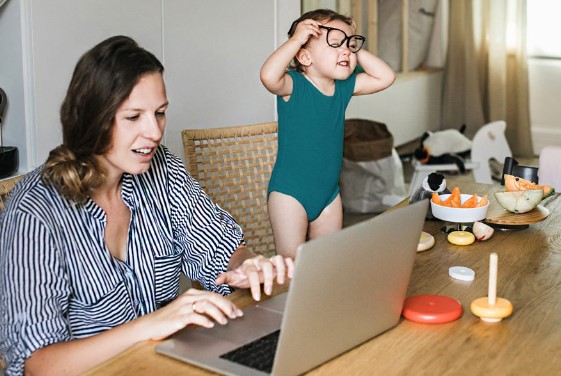Many businesses around the world are changing the way they operate, especially in the way they expect their staff to work.
Traditionally, people we expected to be in the office (if your role was office-based) between set hours, typically 9am to 5pm. This started to change as people wanted to work more flexibly to accommodate childcare, pick kids up after school and avoid heavy traffic periods.

In the last couple of years, there has been a move to people working from home or working a hybrid model where they work part of the week at home and part of the week in the office. This is helping businesses to reduce overheads, allowing them to rent smaller office spaces and manage the workforce so that it is possible to hot desk.
It is also allowing businesses to improve their overall recruitment. It is seen as a big incentive for people to be able to work from home. This massively reduces costs for employees who no longer have to drive or take public transport to work, not to mention the time that is freed up by not having to commute.
It also allows smaller businesses to expand their recruitment catchment area. By offering the opportunity to work from home for all or part of the week, businesses that are located further away become more appealing as prospects know they won’t have to commute every day.
Whilst there are many benefits of working from home, both for businesses and individuals, it has only been made possible by the huge shift towards digital. Improved broadband coverage, coupled with the change in culture to support bring your own device (BYOD) working, has meant that people have become much more familiar with working remotely.
Long gone are the days when people were limited to a desktop computer, meaning that when they switched off at the end of the day, that was it in terms of their work output.
Smartphones, tablets, and of course, laptops, mean that people can work from anywhere at any time.
Laptops are the natural extension of a desktop computer and can be plugged in at workstations at both the home and the office, allowing you to take your office with you no matter where you are working.
Perhaps the biggest shift over the past twenty years has been the rapid advancements in mobile technology. There is very little that can’t be achieved on your mobile smartphone today, from the most basic responding to emails, to more complex tasks that can be done through mobile applications.
Improved Output
In the past, working from home has had some negative connotations. It was seen as a way for people to essentially “skive” off work, doing the bare minimum whilst working without supervision.
Today, things are a bit different. Apollo Technical recently reported that “Several studies over the past few months show productivity while working remotely from home is better than working in an office setting. On average, those who work from home spend 10 minutes less a day being unproductive, work one more day a week, and are 47% more productive.”
A study by Standford of 16,000 workers over 9 months found that working from home increases productivity by 13%. This increase in performance was due to more calls per minute attributed to a quieter, more convenient working environment and working more minutes per shift because of fewer breaks and sick days.
Remote working is particularly appealing to college and university graduates who have never had to work in an office environment from Monday to Friday, 9 to 5. Remote and flexible working is something that is much more appealing to the younger generation, many of who are happy to work later in the evening and free up time in their day if the nature of their work means that they are not limited to the traditional working hours.
Focus on digital
Of course, this switch to remote and flexible work has only been made possible by those businesses that have continued to invest in digital platforms to improve customer experiences and provide the best possible service to their customers.
Companies big and small throughout the world are constantly investing in digital research and development, all of which is helping to facilitate a working environment that is more digital-focused.
From entertainment giants like Netflix to online sports betting sites like Betway Sports to leading cloud service providers like Amazon Web Services, the investment in digital is helping to drive a shift in the way that people are able to work, as well as driving a more productive workforce.
Of course, we are only scratching at the surface of what is possible and over the next decade, we can expect further growth and investment in digital, especially in the areas of artificial intelligence (AI) and machine learning (ML) which will become part of our day to day lives, helping to facilitate more automation and further improve productivity.
For the next generation of graduates, they can expect a very different working environment to the one that many people have been used to up to this point.